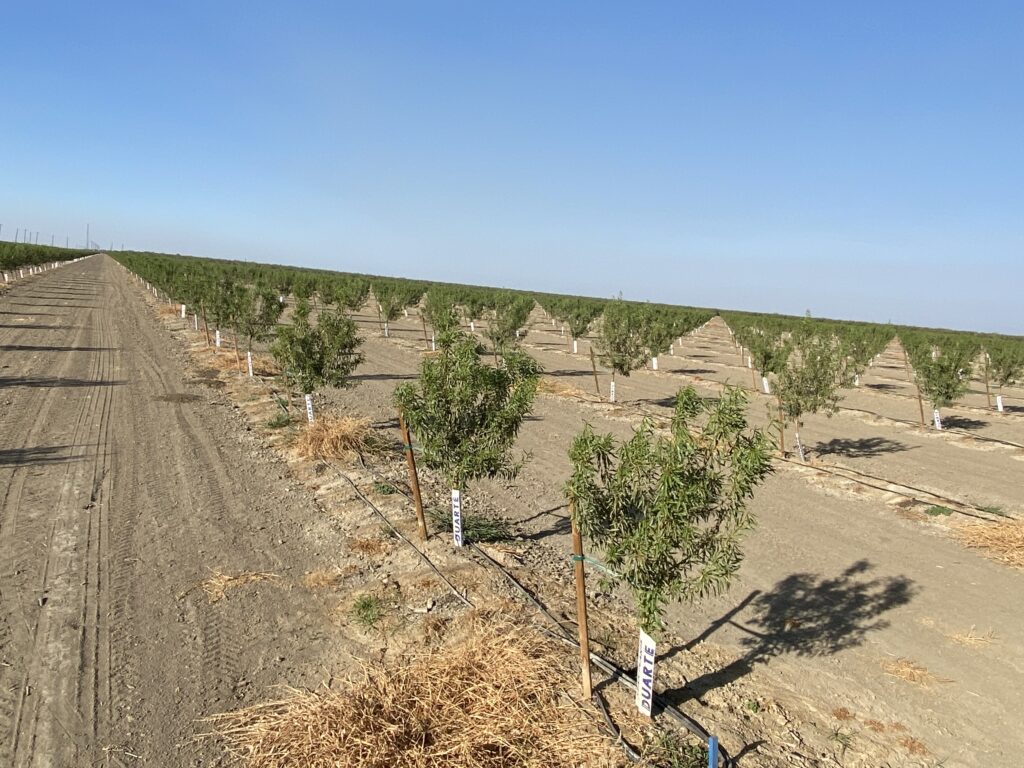In the world of farming, not all crops are equal.
That is starkly apparent when looking at how crops changed in the central and southern San Joaquin Valley since the beginning of the last drought, according to county crop reports.
While most counties saw reductions in overall harvested acres between 2012 and 2020, they also saw sharp increases in permanent crop acreage — particularly almond and pistachio trees.
Almond and pistachio acreage increased by 600,415 acres across Kern, Kings, Tulare, Madera and Fresno counties between 2012 and 2020.
It’s not difficult to understand the lure.
Crop reports show prices per ton of nuts averaged $3,912 last year compared to about $1,745 per ton of fresh table grapes, which are the area’s next most prolific high-value crop.
That doesn’t mean 600,415 acres of “new” ground was planted in orchards, as trees often took the place of existing crops such as alfalfa and tomatoes.
In fact, the region lost a total of 147,108 harvested acres overall, according to crop reports.
The counties that saw the greatest reductions in harvested acres from 2012-2020 were Kings and Fresno. Kings County lost 50,180 harvested acres, a 6% decrease. Fresno County dropped 92,494 acres for a 4.5% decrease. Those reductions were mostly vegetable crops. Kings County vegetable acres dropped by 21% and Fresno County acres devoted to veggies dropped 23% from the start of the last drought to 2020.
Madera was the only county that saw an overall increase in harvested acres, going from 668,320 up to 732,810 total acres, a 9.65% increase. Nearly all of that increase was driven by new almond and pistachio plantings.
In Kern County, total harvested acres dropped by 18,836, while farmers planted 165,853 more acres of pistachios and almonds between the start of the last drought and 2020.
Despite the decrease in total harvested acres, farmers also sought to drill a lot more wells between 2012 and 2021, according to records and information from each county.
In that time frame, permits for approximately 1,330 new ag wells were issued in Kern County; about 4,000 in Tulare County; 1,240 in Kings County; 3,850 in Fresno County; and 1,260 in Madera County.
Reliance on groundwater has increased over the years as deliveries of surface water from the State Water Project have dropped to an average 45% reliability. This past year, farmers only received 5% of the water they paid for. Even in 2017, a record-setting water year, the State Water Project delivered 85% of contracted amounts.
It remains to be seen how the state’s new Sustainable Groundwater Management Act, SGMA, will impact valley farming. SGMA mandates water basins in critical overdraft bring aquifers into balance, meaning more water isn’t pumped out than goes back in. Most of the San Joaquin Valley is considered critically overdrafted.
Pumping restrictions could mean a significant reduction in farmed acres as growers let land go fallow or find new uses for their land, such as solar farms.
Share this:
- Click to share on Facebook (Opens in new window)
- Click to share on Twitter (Opens in new window)
- Click to share on LinkedIn (Opens in new window)
- Click to share on Reddit (Opens in new window)
- Click to share on Tumblr (Opens in new window)
- Click to share on Pinterest (Opens in new window)
- Click to share on Pocket (Opens in new window)
- Click to share on Telegram (Opens in new window)
- Click to share on WhatsApp (Opens in new window)
- Click to print (Opens in new window)







